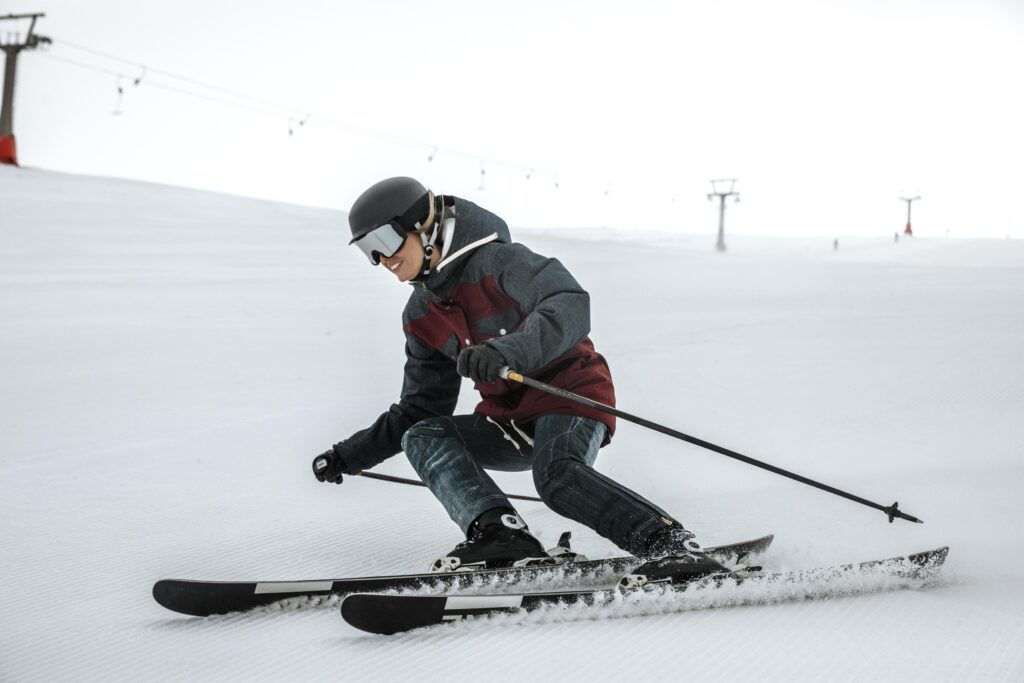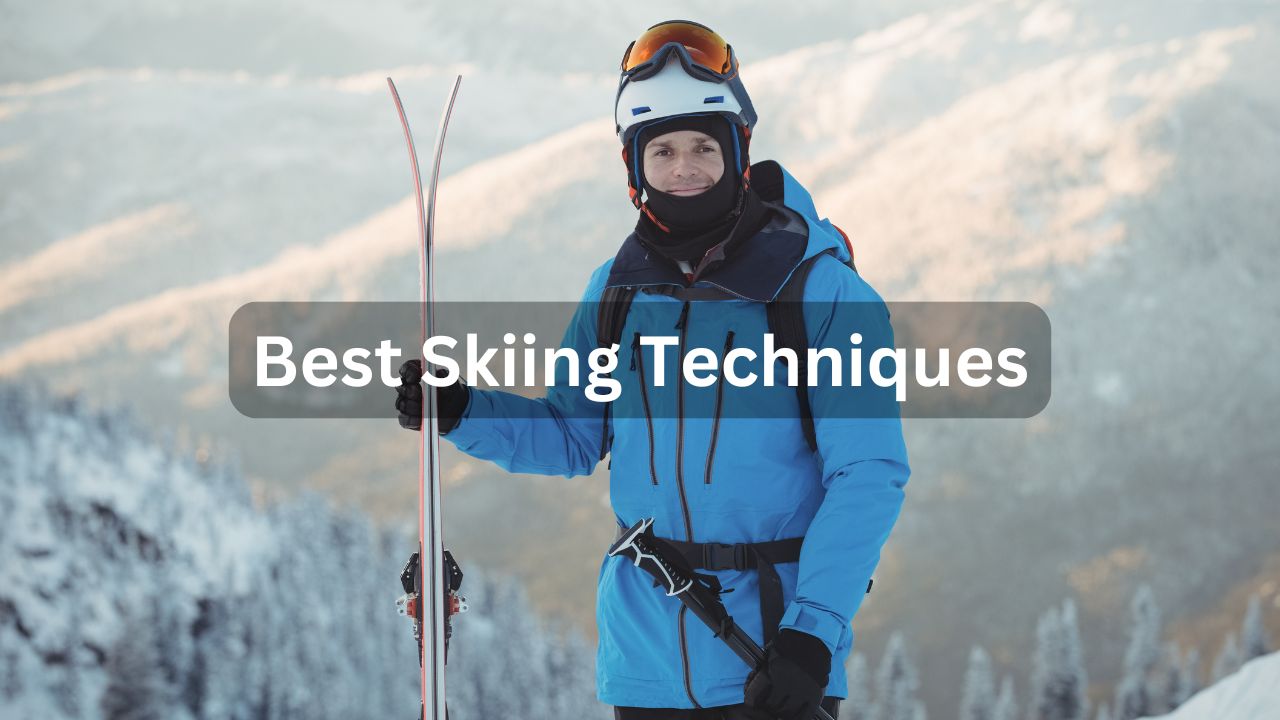Are you ready to take your skiing to the next level? Extreme skiing techniques can transform your winter sports experience from ordinary to extraordinary. Whether you’re a seasoned pro or an ambitious beginner, mastering these advanced skills will elevate your performance on the slopes and open up a world of thrilling possibilities.
In this comprehensive guide, we’ll explore the various facets of extreme skiing, from freestyle tricks to backcountry adventures. We’ll also delve into the techniques that can help you improve your performance and push your limits. So strap on your boots, and let’s hit the slopes!
Mastering Freestyle Skiing Tricks and Urban Skiing Stunts
Freestyle skiing is where creativity meets athleticism. It’s a discipline that allows skiers to express themselves through a variety of aerial maneuvers and ground-based tricks. Here are some key aspects to consider:
- Start with the basics: Learn how to perform 180s, 360s, and basic grabs before progressing to more complex tricks.
- Practice on trampolines: This helps you develop air awareness and body control.
- Use progression pads: These foam pads allow you to practice tricks safely before taking them to the snow.
- Focus on takeoffs and landings: The key to smooth freestyle tricks often lies in how you leave and return to the ground.
Urban skiing, a subset of freestyle, takes the sport to the streets. It involves using man-made structures as your playground. While exciting, it requires extra caution and often special permissions.
Conquering Off-Piste and Backcountry Skiing Adventures

Off-piste and backcountry skiing offer an unparalleled sense of freedom and connection with nature. However, they also come with increased risks. Here’s what you need to know:
- Always carry essential safety gear: This includes an avalanche beacon, probe, and shovel.
- Take an avalanche safety course: Understanding snow conditions and risk assessment is crucial.
- Never ski alone: Always bring a partner and inform others of your plans.
- Learn to read terrain: Identify potential hazards like cornices, cliff bands, and avalanche-prone slopes.
Remember, the backcountry is not for beginners. Build your skills on-piste before venturing into uncontrolled terrain.
Perfecting Ski Jumping Techniques for Maximum Air
Ski jumping is not just for Olympic athletes. Many resorts now offer jumps of various sizes for recreational skiers. Here’s how to improve your jumping technique:
- Master the in-run position: Keep your body low and compact for maximum speed.
- Time your takeoff: Push off the jump at the right moment to achieve optimal height and distance.
- Maintain balance in the air: Keep your arms slightly forward and your skis parallel.
- Practice safe landings: Absorb the impact by bending your knees and keeping your upper body stable.
Start small and gradually work your way up to larger jumps as your confidence and skills improve.
Powder Skiing Tips for Unparalleled Winter Sports Experiences
Skiing in deep powder is often described as floating on a cloud. It’s an exhilarating experience, but it requires a different technique than groomed runs. Here are some tips to enhance your powder skiing:
- Use wider skis: They provide more surface area, helping you stay on top of the snow.
- Keep your weight centered: Avoid leaning back, as this can cause your ski tips to rise and dive.
- Make smoother, rounder turns: This helps maintain your speed and prevents you from sinking into the snow.
- Look ahead: Plan your line to avoid obstacles and find the best snow.
Remember, skiing in deep powder can be physically demanding. Build up your endurance and take breaks when needed.
Improving Ski Performance Through Innovative Techniques
Continuous improvement is key in extreme skiing. Here are some innovative ways to enhance your performance:
- Video analysis: Record your runs and analyze your technique. This can reveal areas for improvement that you might not notice while skiing.
- Dryland training: Incorporate exercises that mimic skiing movements to build strength and muscle memory.
- Mental rehearsal: Visualize successful runs and tricks. This can improve your confidence and performance.
- Try new technologies: Experiment with different ski designs and boot setups to find what works best for your style.
Remember, progress often comes in small increments. Celebrate your improvements, no matter how minor they may seem.
Pushing the Boundaries of Extreme Skiing
As you continue to develop your extreme skiing techniques, always prioritize safety. Push your limits gradually and within your abilities. The world of extreme skiing is vast and varied, offering endless opportunities for growth and excitement.
Whether you’re hucking cliffs in the backcountry, perfecting your latest freestyle trick, or carving through waist-deep powder, remember to enjoy the journey. After all, the ultimate goal of extreme skiing is not just to challenge yourself, but to have fun while doing it.
So go ahead, embrace the challenge, and let your mind go crazy about skiing. Who knows what incredible feats you might achieve?
FAQ (Frequently Asked Questions)
What fitness level do I need for extreme skiing?
A high level of fitness is beneficial for extreme skiing. Focus on cardiovascular endurance, leg strength, and core stability. Regular exercise and specific ski conditioning can help prepare your body for the demands of extreme skiing.
How can I stay safe while practicing extreme skiing techniques?
Safety should always be your top priority. Start by mastering basic techniques, use appropriate safety gear, know your limits, and never ski alone in challenging terrain. Taking avalanche safety courses and staying informed about weather and snow conditions is crucial for off-piste and backcountry skiing.
What type of skis are best for extreme skiing?
The best skis depend on the specific type of extreme skiing you’re doing. For freestyle, you might want twin-tip skis. For backcountry, wider skis with touring bindings could be ideal. For big mountain skiing, you might prefer stiffer, more stable skis. It’s best to consult with a professional to find the right skis for your needs.
How long does it take to become proficient in extreme skiing techniques?
The time it takes to become proficient varies greatly depending on your starting skill level, frequency of practice, and natural aptitude. With regular practice and proper instruction, you can see significant improvements in a single season. However, mastering extreme skiing techniques is a lifelong journey of learning and refinement.

